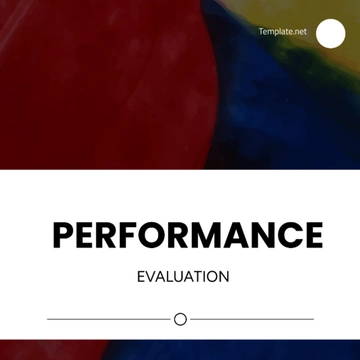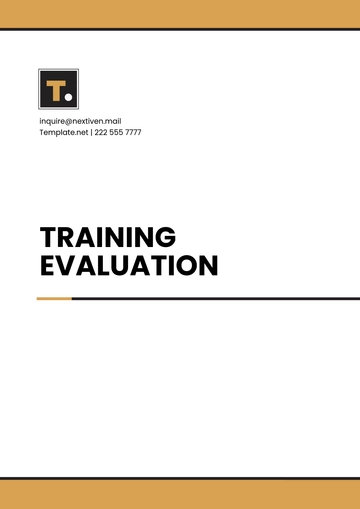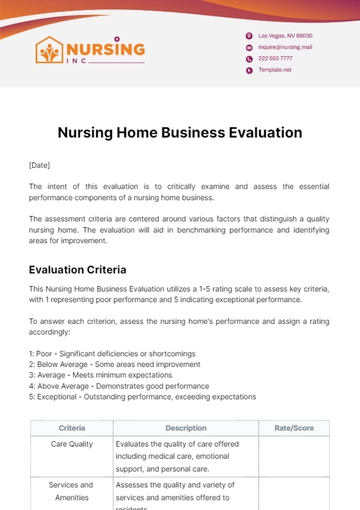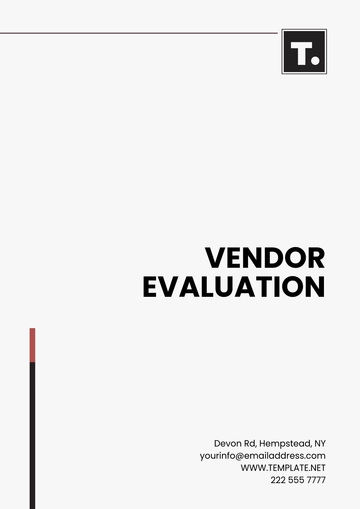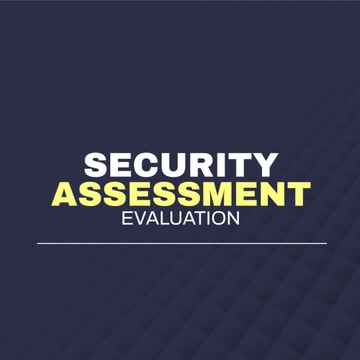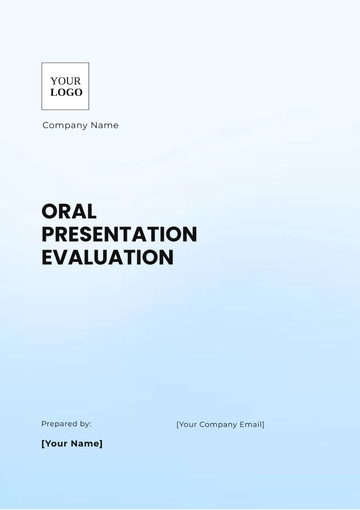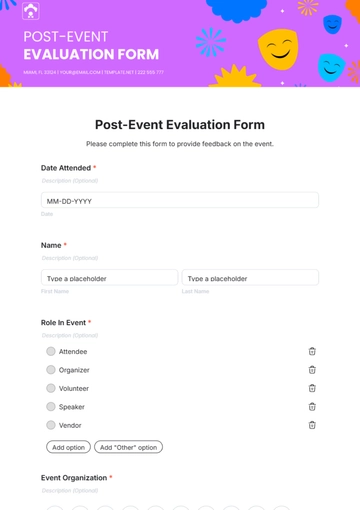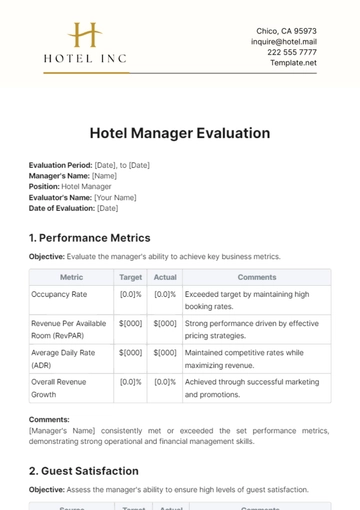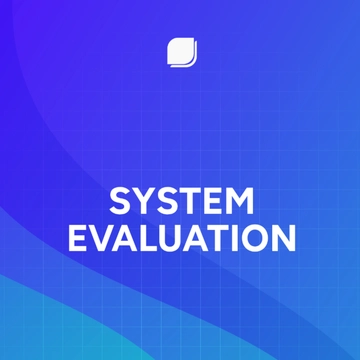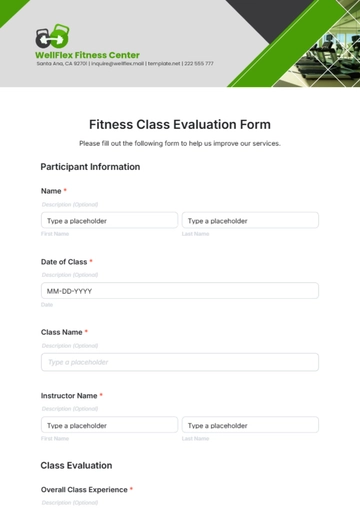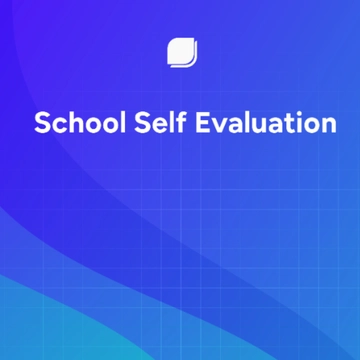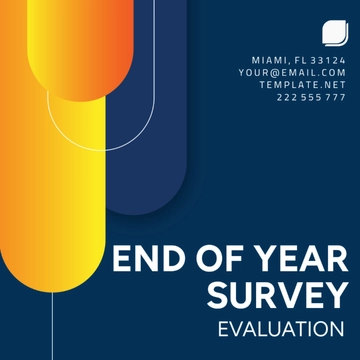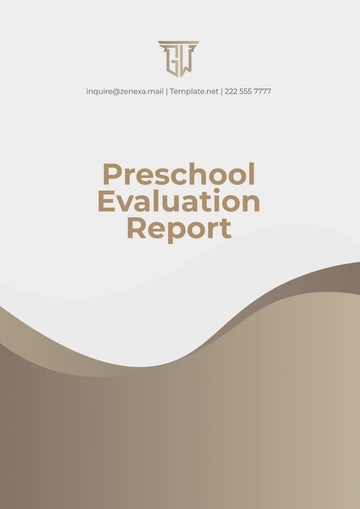Free Finance Budget Performance Evaluation Manual
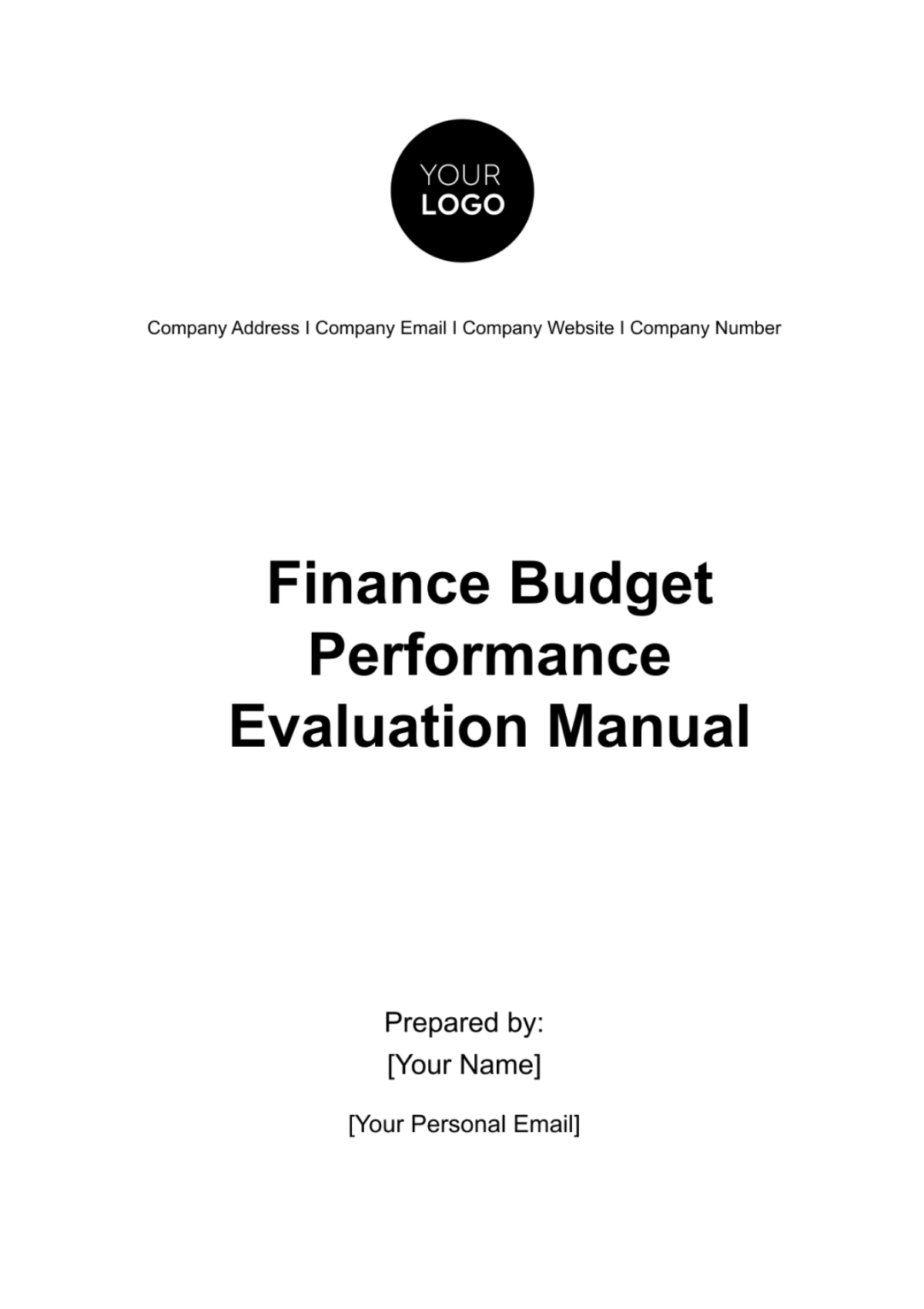
I. Introduction
A. Purpose
The purpose of this manual is to significantly improve the efficiency and efficacy of budget management practices employed within our organization. By providing clear guidelines and procedures, it aims to establish a systematic and transparent process for evaluating budget performance. This systematic approach ensures that our organization adopts a data-driven decision-making culture, where insights derived from budget evaluations play a pivotal role in shaping future financial strategies. Through this manual, we aim to empower decision-makers with the tools and knowledge needed to continually refine and optimize our budgeting practices.
B. Objectives
Enhance Decision-Making
Empower stakeholders with valuable insights into budgetary performance, enabling strategic and informed decision-making at all levels of the organization.
Improve Accountability
Foster a culture of accountability by setting clear expectations and responsibilities for budget managers and contributors throughout the budgeting process.
Drive Continuous Improvement
Establish a robust framework for ongoing evaluation and refinement, promoting adaptability to changing organizational needs and fostering a culture of continuous improvement.
II. Key Performance Indicators (KPIs)
A. Selection of Relevant KPIs
Evaluate KPI Alignment with Strategic Goals
Assess how well current KPIs (e.g., quarterly revenue growth, cost-to-income ratio, and return on investment) align with organizational strategic goals.
Confirm that selected KPIs directly measure key financial objectives as outlined in the Finance Budget Performance Evaluation Manual.
Understand the specific contribution of each KPI to strategic outcomes.
Verify Ongoing Relevance of Each KPI
Confirm the ongoing relevance of existing KPIs, including quarterly revenue growth, cost-to-income ratio, and return on investment, in the current organizational context.
Cross-reference KPIs with outlined financial objectives to address any discrepancies promptly.
Reaffirm Alignment of Current KPIs with Financial Goals
Confirm the alignment of current KPIs (e.g., quarterly revenue growth, cost-to-income ratio, and return on investment) with broader organizational strategy and financial goals.
Ensure the selected metrics comprehensively cover various aspects of financial performance.
B. Establishing Benchmark Targets
Define Specific Benchmark Targets for Each KPI
Clearly define benchmark targets for each existing KPI (e.g., Achieve 10% quarterly revenue growth).
Align benchmarks precisely with the expectations associated with each KPI.
Utilize Historical Performance Data for Realistic Benchmarks
Delve into historical performance data related to current KPIs (e.g., quarterly revenue growth and return on investment) for realistic benchmark setting.
Utilize past performance data for each KPI as a foundation to establish achievable targets.
Ensure Motivational Benchmarking with Current KPIs
Confirm that benchmarks, such as achieving 10% quarterly revenue growth, motivate improvement based on the characteristics of each existing KPI.
Balance the difficulty level of benchmarks to ensure they are challenging yet attainable within the current KPI framework.
C. Regularly Review and Adjust KPIs
Conduct Quarterly Relevance Assessment of Each KPI
Conduct quarterly reviews to assess the ongoing relevance of each existing KPI.
Consider organizational shifts and changes in business dynamics during the review process.
Adapt KPIs to Organizational Shifts
Adjust each KPI, including quarterly revenue growth targets, to reflect changes in market conditions or shifts in organizational strategy.
Confirm the flexibility of existing KPIs to accommodate changing circumstances.
Dynamically Adjust Benchmarks Based on KPI Performance
Periodically review and adjust benchmarks based on the performance of each specific KPI.
Consider feedback from stakeholders and emerging industry trends related to individual KPIs.
D. Communicate KPIs and Benchmark Targets Clearly
Clearly Communicate Specifics of Each KPI
Clearly communicate the specifics of each existing KPI, including quarterly revenue growth targets, to all relevant stakeholders.
Use accessible language to ensure understanding across departments, emphasizing the unique characteristics of each KPI.
Reinforce Understanding and Alignment with Current KPIs
Reinforce understanding of the significance of each existing metric, such as quarterly revenue growth, among stakeholders.
Promote alignment across departments regarding the importance of each current KPI.
Emphasize Transparency for Collaboration on Current KPIs
Emphasize transparency in communication about benchmark targets tied to each existing KPI.
Encourage collaboration among departments to achieve and exceed the established benchmarks for each specific KPI.
Establish communication channels for feedback and discussion on the performance of each existing KPI within the context of the manual's instructions.
III. Monitoring and Tracking
Monitoring budgetary performance in real-time is essential for timely decision-making. The table below presents an overview of various monitoring tools, highlighting their distinctive features and functionalities:
Monitoring Tool | Feature | Description |
Key Metrics Dashboard | Visual Representation | Dashboards provide a visual representation of key performance metrics, facilitating quick insights. |
In the context of monitoring, the Key Metrics Dashboard serves as a crucial tool for visualizing essential performance metrics within our organization. This feature allows stakeholders to gain immediate insights through a graphical representation, promoting a rapid understanding of key financial and operational indicators. The dashboard offers a user-friendly interface, facilitating efficient monitoring by presenting complex data in an accessible format. Decision-makers can easily track and interpret key metrics, enabling timely interventions based on real-time information. This visual representation enhances the monitoring process by providing a comprehensive and intuitive overview of performance.
Crucial for maintaining organizational agility and responsiveness, the implementation of these monitoring tools is paramount. The effective utilization of real-time tools empowers organizations to make informed decisions, providing a proactive means to mitigate risks and capitalize on emerging opportunities. This dynamic approach to budgetary oversight, facilitated by the monitoring tools, significantly contributes to the overall success of financial management strategies. By leveraging these tools, organizations can adapt swiftly to changing circumstances, ensuring a responsive and well-informed approach to budget management. Ultimately, the proactive implementation of monitoring tools becomes a cornerstone in enhancing organizational resilience and achieving financial goals.
IV. Periodic Performance Reviews
The table below outlines tools utilized during these reviews, offering insights into their roles and applications:
Analysis Tool | Description |
Budget Variance Reports | Highlights disparities between planned and actual budget figures for analysis. |
In our Periodic Performance Reviews, the Budget Variance Reports plays a pivotal role. This tool serves as a critical component by highlighting disparities between planned and actual budget figures, providing a comprehensive view of financial performance over specific periods. Through the detailed analysis facilitated by Budget Variance Reports, we can pinpoint areas where budgetary execution deviates from initial plans, empowering us to make informed decisions and strategic adjustments.
Each analysis tool fulfills a distinct role, collectively contributing to the enhancement of strategic decision-making through robust monitoring and analysis. The synergy of these tools facilitates proactive analysis of financial resources, enabling us to optimize our budgetary strategies for sustained success. The regular reviews supported by these tools empower our decision-makers to adapt swiftly to evolving financial landscapes, fostering organizational resilience in the face of dynamic challenges. Through the comprehensive insights derived from these tools, our organization gains a nuanced understanding of budgetary dynamics, enabling us to make informed decisions that align with overarching objectives. Ultimately, this cohesive approach to analysis not only enhances our strategic decision-making but also positions us for continued success in the ever-changing business environment.
IV. Variance Analysis
A. Assessment of Budget Variances
Identify Variances in Revenue and Expenses
Scrutinize budgeted revenue against actual figures monthly.
Analyze discrepancies in budgeted and actual expenses quarterly to pinpoint areas of concern.
Focus on specific KPIs related to revenue growth (e.g., 10% quarterly) and cost-to-income ratio for a detailed assessment.
Examine Key Drivers of Variances
Investigate the key drivers behind variances in revenue and expenses.
Identify external factors, market conditions, or internal operational issues contributing to discrepancies.
Prioritize addressing variances impacting strategic financial goals outlined in the manual.
Quantify and Document Variances
Quantify the monetary impact of identified variances in revenue and expenses.
Document findings clearly, linking each variance to specific financial metrics.
Utilize a standardized format for variance documentation to ensure consistency.
B. Root Cause Analysis and Mitigation
Conduct Root Cause Analysis
Dig deeper into the root causes of identified variances.
Utilize financial data, operational reports, and market analysis to pinpoint underlying issues.
Collaborate with relevant departments to gain insights into specific variances.
Develop Mitigation Strategies
Formulate targeted strategies to address root causes and mitigate future variances.
Establish action plans outlining steps to be taken to minimize or eliminate identified issues.
Align mitigation strategies with the overall financial objectives of the organization.
Implement Changes and Monitor Progress
Implement changes based on mitigation strategies promptly.
Monitor the progress of implemented changes and their impact on reducing variances.
Adjust strategies as needed, ensuring continuous improvement in budget performance.
C. Communication and Reporting
Communicate Variance Analysis Findings
Clearly communicate variance analysis findings to relevant stakeholders monthly.
Use accessible language to convey the impact of variances on financial performance.
Provide insights into corrective actions being taken to address identified issues.
Generate Comprehensive Variance Reports
Develop comprehensive variance reports detailing budgeted vs. actual performance.
Include visual representations, such as graphs or charts, to enhance understanding.
Distribute reports quarterly in a timely manner, facilitating informed decision-making.
Facilitate Cross-Departmental Discussions
Organize cross-departmental discussions to discuss variance analysis results quarterly.
Encourage collaboration among departments to share insights and coordinate efforts.
Foster a transparent and collaborative approach to addressing budget variances.
D. Continuous Improvement and Future Planning
Incorporate Lessons Learned into Future Budgeting
Incorporate insights gained from variance analysis into future budgeting processes.
Adjust budgeting assumptions and projections based on lessons learned.
Implement changes to enhance the accuracy of future budget forecasts.
Refine Budgeting Strategies
Refine budgeting strategies to proactively address potential variances.
Anticipate market trends, economic changes, and internal factors that may impact budget performance.
Develop a forward-looking approach to budgeting for improved financial resilience.
Establish a Continuous Improvement Culture
Promote a continuous improvement culture within the organization.
Encourage teams to identify areas for improvement in budgeting and financial management.
Foster a dynamic and adaptive approach to budget performance evaluation for sustained success.
VI. Corrective Actions
A. Immediate Remedial Measures
Swift Identification of Variances
Implement a real-time monitoring system to swiftly identify budget variances, monitoring critical KPIs weekly.
Set up automated alerts triggered by predefined thresholds for immediate attention.
Monitor specific KPIs, such as achieving 10% quarterly revenue growth, to catch deviations promptly.
Emergency Response Team Activation
Establish an Emergency Response Team, including designated roles and responsibilities, activated immediately upon the detection of substantial variances.
Utilize communication channels such as email for prompt notification and coordination.
Conduct regular training and drills to ensure the team's readiness to respond effectively.
Temporary Budget Adjustments
Authorize temporary adjustments to the budget to mitigate immediate financial risks, ensuring adjustments align with the organization's overall financial strategy.
Document and communicate temporary changes transparently to relevant stakeholders via official communication channels.
B. Root Cause Resolution and Continuous Improvement
Comprehensive Root Cause Analysis
Conduct an in-depth root cause analysis to address the underlying issues contributing to variances quarterly.
Engage cross-functional teams, meeting monthly, to ensure a comprehensive understanding of the root causes.
Prioritize resolution efforts based on the impact on strategic financial goals.
Implement Sustainable Solutions
Develop and implement sustainable solutions to address root causes identified in the analysis.
Collaborate with departments to integrate corrective actions seamlessly into existing processes.
Ensure alignment with long-term financial objectives outlined in the Finance Budget Performance Evaluation Manual.
Continuous Monitoring and Adjustment
Establish continuous monitoring mechanisms to track the effectiveness of implemented solutions monthly.
Regularly review the performance of corrective actions and adjust strategies as needed.
Foster a culture of continuous improvement, encouraging proactive identification and resolution of potential issues.
C. Stakeholder Communication and Transparency
Timely Communication of Corrective Actions
Communicate corrective actions to relevant stakeholders promptly via email and official communication channels.
Provide clear and concise updates on the measures being taken to address budget variances, ensuring bi-weekly updates during critical periods.
Establish a communication plan outlining the frequency and channels for updates.
Transparency in Reporting
Include details of corrective actions in variance reports distributed quarterly.
Use visual aids and concise language to enhance transparency in reporting, incorporating a breakdown of numerical impacts.
Encourage feedback and questions from stakeholders via designated feedback channels to ensure a shared understanding of corrective measures
Engage Stakeholders in Solution Implementation
Engage stakeholders in the implementation of corrective actions, soliciting input via regular feedback sessions.
Foster a collaborative approach to problem-solving, leveraging the expertise of diverse teams.
Utilize virtual communication tools for remote collaboration and engagement.
D. Adaptation and Continuous Learning
Ongoing Assessment of Corrective Measures
Regularly assess the ongoing effectiveness of corrective measures, utilizing key performance indicators (KPIs) for specific numerical evaluation.
Use monthly check-ins to gauge the sustained impact of implemented solutions.
Adjust strategies promptly based on real-time feedback and evolving circumstances.
Documentation and Knowledge Transfer
Document the outcomes of corrective actions and lessons learned, creating a centralized repository.
Facilitate knowledge transfer within the organization quarterly through workshops and training sessions.
Use documented insights to refine the organization's approach to budget performance evaluation.
Incorporate Learnings into Future Planning
Incorporate learnings from corrective actions into future budget planning processes annually.
Adjust budget assumptions and strategies based on insights gained from the corrective measures.
Ensure a dynamic and adaptive approach to budgeting for sustained financial resilience, incorporating frequency adjustments based on lessons learned.
VII. Reporting and Communication
A. Periodic Budget Performance Reports
Compile Comprehensive Reports
Aggregate key financial data into comprehensive reports.
Include both quantitative and qualitative analyses for a holistic view.
Ensure Timely Distribution
Establish a schedule for regular distribution of budget performance reports.
Ensure reports reach relevant stakeholders promptly to support timely decision-making.
Facilitate Interactive Discussions
Encourage interactive discussions during report presentations.
Provide a platform for stakeholders to seek clarifications and share insights.
B. Communication Protocols
Establish Review Meetings
Schedule regular review meetings to discuss budget performance.
Facilitate open dialogue among stakeholders to address concerns and share updates.
Standardize Documentation
Standardize the format and content of budget-related documentation.
Ensure consistent formatting and terminology across all documentation related to budget performance evaluation.
Include specific sections for numerical data, frequency of assessments, and impact assessments.
Implement version control mechanisms to track updates and revisions in the documentation.
VIII. Review and Revision
A. Periodic Review Processes
Routine Reviews
Conduct reviews at predetermined intervals to assess the effectiveness of current procedures.
Engage Stakeholders in Reviews
Include key stakeholders in the review process to gather diverse perspectives.
Encourage feedback and suggestions for improvement from individuals involved in budget management.
Evaluate Alignment with Goals
Evaluate the alignment of budgetary processes with organizational goals.
Identify areas where adjustments may be needed to better support strategic objectives.
B. Incorporating Lessons Learned
Document Lessons from Previous Cycles
Maintain a record of insights and lessons learned from previous budget cycles.
Document successes, challenges, and areas for improvement to inform future decision-making.
Implement Revisions Based on Feedback
Act on feedback received during reviews to implement necessary revisions.
Ensure that the budget performance evaluation process evolves in response to organizational learning.
Promote a Culture of Adaptability
Foster a culture that values adaptability and continuous improvement.
Encourage teams to proactively suggest revisions based on their experiences and observations.
IX. Glossary
Benchmark Targets
Reference points or goals used for evaluating and measuring performance against established standards.
Budget vs. Actuals
A comparison of budgeted figures with the actual financial results to assess performance.
Contingency Plans
Pre-established strategies designed to address unforeseen circumstances or unexpected challenges.
Cross-Functional Training
Training programs that involve employees from different departments, fostering collaboration and shared understanding.
Iterative Process
A repetitive and continuous cycle of planning, execution, evaluation, and adjustment.
Key Performance Indicators (KPIs)
Quantifiable metrics used to measure the organization's performance against its strategic goals.
Root Cause Analysis
Systematic process of identifying the fundamental reasons behind variances or issues.
Variance Analysis
Examination of the differences between planned (budgeted) and actual financial outcomes.
- 100% Customizable, free editor
- Access 1 Million+ Templates, photo’s & graphics
- Download or share as a template
- Click and replace photos, graphics, text, backgrounds
- Resize, crop, AI write & more
- Access advanced editor
Level up financial control effortlessly with our Finance Budget Performance Evaluation Manual Template from Template.net! Tailor your analysis using our editable and customizable template, seamlessly powered by the intuitive AI Editor Tool. Precision in budgeting has never been more accessible, empowering your decisions with accuracy and efficiency. Grab it now!

